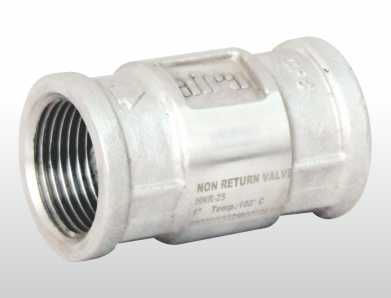The Various Advantages of a Non-Returning Valve
- Aira Euro Automation
- Feb 24, 2023
- 3 min read
A non-returning valve is a valve that only allows fluid to flow in one direction. Non-returning valves are used in various applications, including plumbing and HVAC systems. Non-returning valves have several advantages over other types of valves, including that they are less likely to leak and that they are less likely to become clogged.
Introduction
A non-return valve, also called a check valve, is a mechanical device that allows fluid to flow in only one direction. Non-return valves are used in various applications, such as in plumbing and irrigation systems, to prevent the backflow of water or other liquids. They are also used in industrial settings, such as oil and gas pipelines, to avoid the backflow of liquids or gasses. Non-return valves are typically metal or plastic and have a spring-loaded mechanism that opens and closes the valve.

What is a non-returning valve?
A non-returning valve is a device that helps to prevent backflow in a piping system. Backflow is the undesirable flow reversal in a piping system and can happen when there is a change in pressure or flow direction. Non-returning valves are used in many applications, including industrial and domestic settings.
There are many different types of non-returning valves, but they all work to achieve the same goal: to prevent backflow. Some standard non-returning valves include check, ball, and butterfly valves. Each type of valve has its advantages and disadvantages, so selecting the correct type of valve for the specific application is essential.
Check valves are one of the most common types of non-returning valves. Check valves allow fluid to flow in only one direction and are often used in gravity-fed systems. Check valves are typically straightforward devices made from various materials, including metals, plastics, and composites.
Ball valves are another common type of non-returning valve. Ball valves work by using a ball to block or allow flow through the valve. Ball valves are often used in high-pressure applications because they can withstand considerable pressure. Ball valves are versatile and can be used for liquid and gas applications.
Butterfly valves are a type of non-returning valve that uses a disc to control the flow of fluid. Butterfly valves are typically used in lower-pressure applications than ball valves, but they have the advantage of being much smaller and lighter than other types of non-returning valves.
Various advantages of a non-returning valve
There are many advantages of non-returning valves, which is why they are used in various applications. One of the most significant advantages is that they prevent backflow, which can cause problems in piping systems. Backflow can damage pumps and other equipment, and it can also contaminate water supplies. Non-returning valves ensure that fluid only flows in one direction, preventing backflow and all the problems that come with it.
Another advantage of non-returning valves is that they are relatively simple devices. They usually have just one moving part, meaning there are fewer opportunities for things to go wrong. Non-returning valves are also typically very durable and require little maintenance, making them ideal for high-pressure applications.
Finally, non-returning valves are often less expensive than other types of valves. This is because they are relatively simple devices with few moving parts. Non-returning valves are an excellent option for those who want to save money without sacrificing quality or performance.
How does a non-returning valve work?
A non-returning valve is a valve that only allows fluid to flow in one direction. There are many types of non-returning valves, each with advantages and disadvantages. Check, ball, and butterfly valves are some of the most common non-returning valves.
Check valves allow fluid to flow in only one direction and are often used in gravity-fed systems. Ball valves are often used in high-pressure applications because they can withstand considerable pressure. Butterfly valves are typically used in lower-pressure applications than ball valves, but they have the advantage of being much smaller and lighter than other types of non-returning valves.
There are many advantages to using non-returning valves, including preventing backflow, simplifying piping systems, and being more cost-effective than other valves. Non-returning valves are an ideal choice for many applications.
Conclusion
In conclusion, non-returning valves offer many advantages over other valves, including preventing backflow, simplifying piping systems, and being more cost-effective. Non-returning valves are an ideal choice for many applications.

Comments